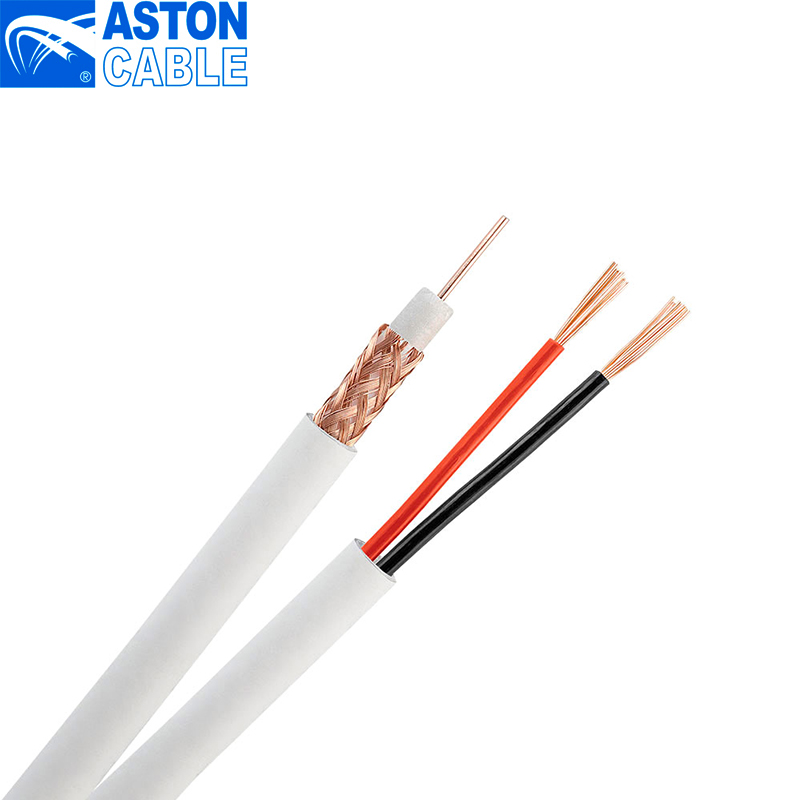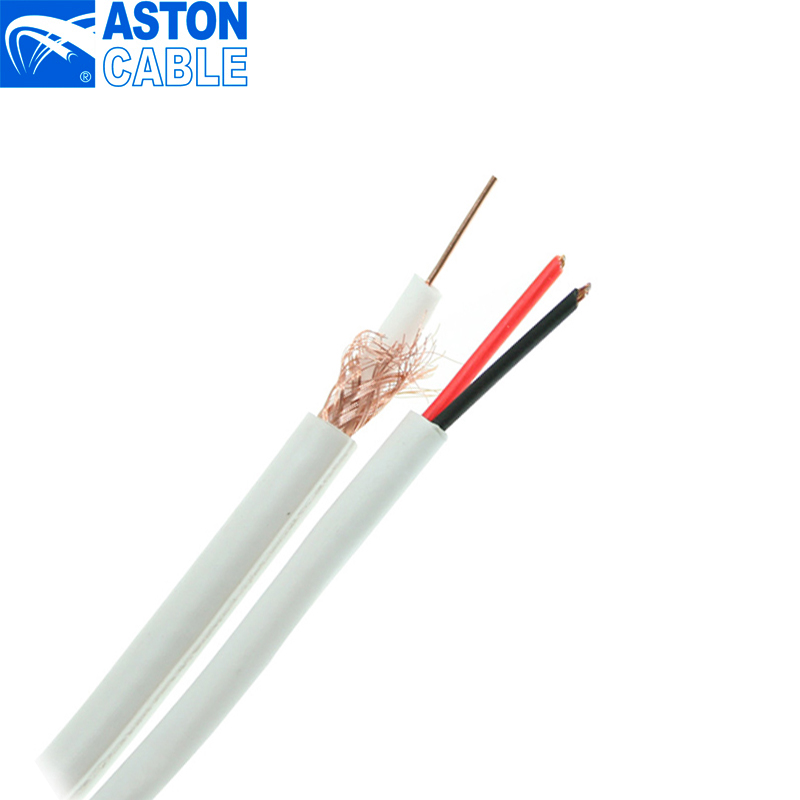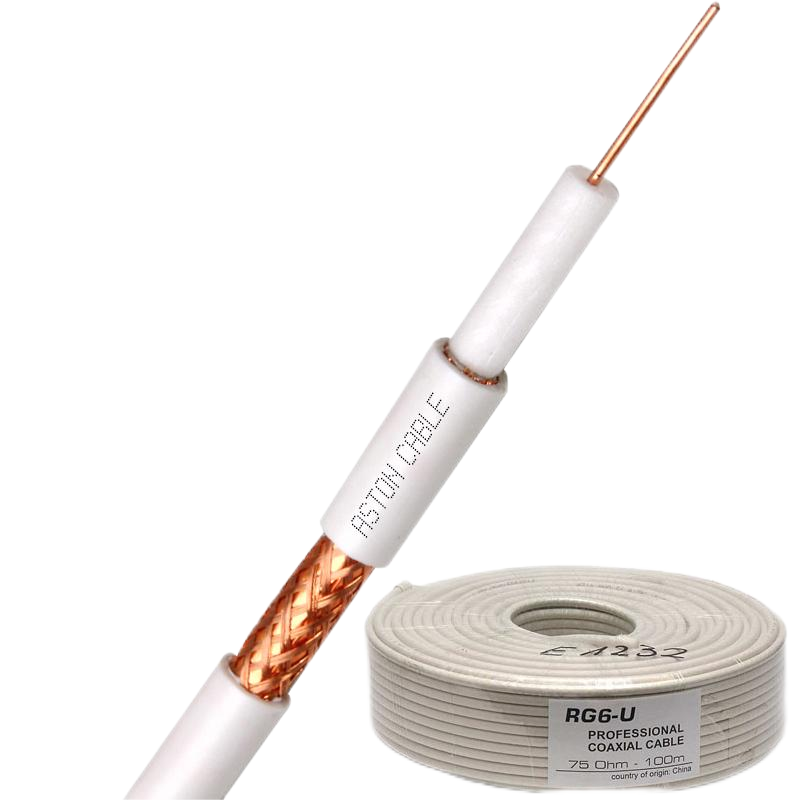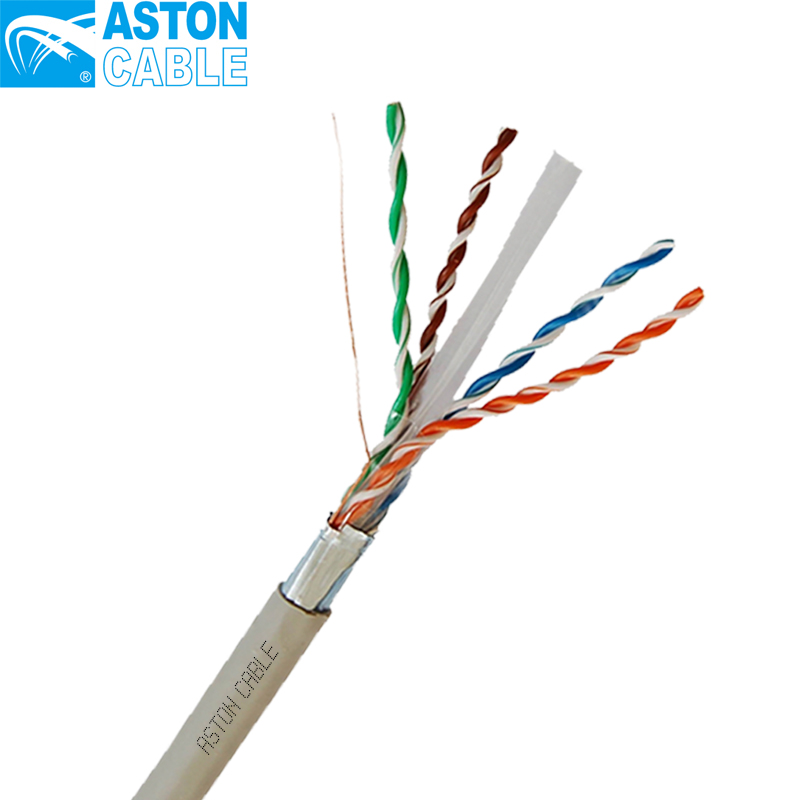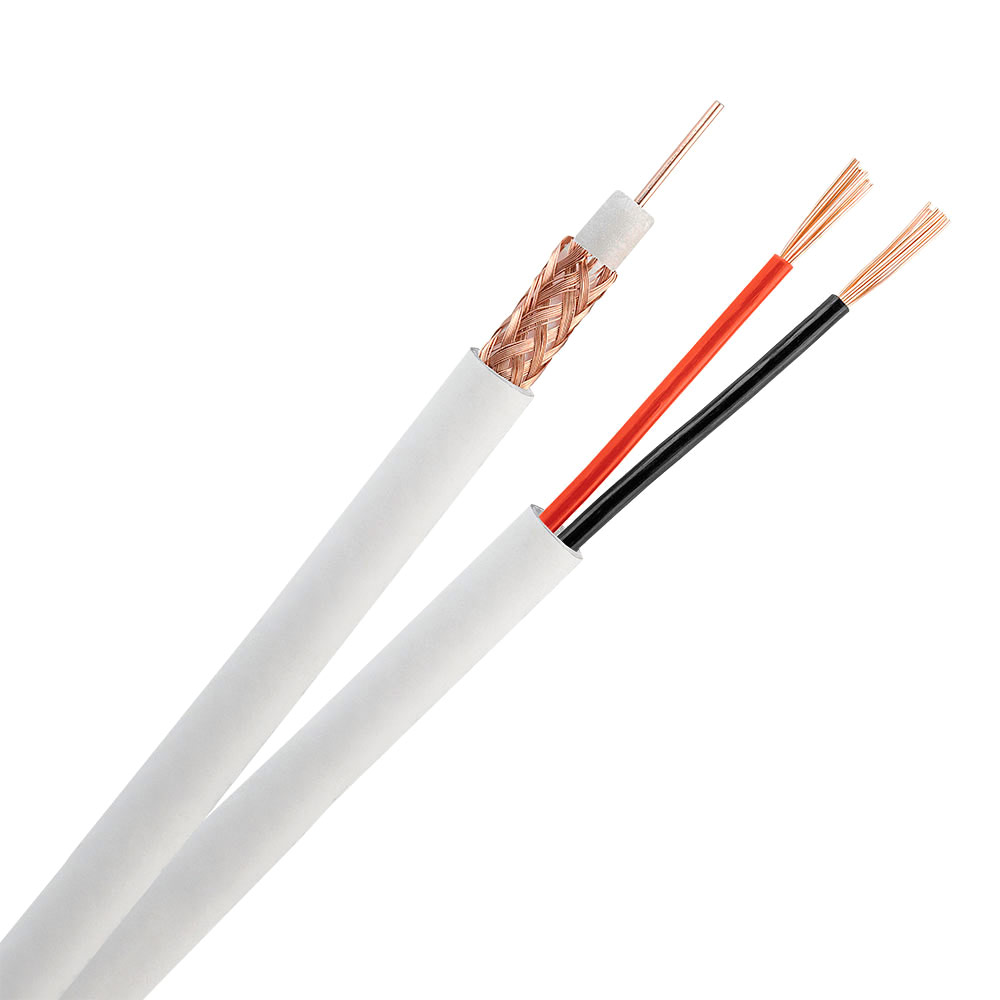Product Details
| Parameter | Details |
|---|---|
| Place of Origin | China |
| Brand Name | ASTON or OEM |
| Certification | SGS CE ROHS ISO9001 |
| Product Name | RG59 CCTV Cable |
| Jackets | PVC, LSZH, PE |
| Color | Customized |
| Conductor | 0.81mm 20AWG Bare copper |
| Usage | VIDEO/CCTV |
| Logo | OEM |
| Connector | BNCDC |
| Origin | Hangzhou Zhejiang |
Common Product Specifications
| Type | RG59 with power cable |
|---|---|
| Weight | 5.4KG/100m |
| Conductor | 0.81 Copper |
| Dielectric | 3.7FPE |
| Jackets | PVC for indoor/ Black PE for outdoor |
| Color | Customized |
| Packages | Coil reel, plastic drum, wooden drum, color boxes, carton boxes |
Product Manufacturing Process
The manufacturing process of RG59 coaxial cable involves several key steps to ensure the final product meets the required specifications. The process begins with the selection of high-quality materials including a bare copper conductor and a polyethylene insulator. The copper is first drawn and annealed to achieve the desired diameter and conductivity. The dielectric insulator is then extruded around the conductor under high pressure. Following this, the shielding layer is applied, typically utilizing a combination of braided aluminum and foil to achieve 95% coverage to protect against EMI and RFI. Finally, the outer jacket, made from materials such as PVC or PE, is extruded to protect the inner components from environmental factors. Each batch of cable undergoes rigorous testing, including impedance, attenuation, and structural integrity checks to ensure compliance with industry standards and customer requirements.
Product Application Scenarios
The China RG59 coaxial cable is highly adaptable and finds widespread use in various application scenarios due to its reliable performance and cost-effectiveness. In HD CCTV systems, this cable is commonly employed for transmitting video signals from cameras to recording devices or monitors. Its flexibility and ease of installation make it a preferred choice in residential and commercial security setups, where moderate distances between devices are common. Additionally, RG59 remains applicable in older broadband internet installations, although it is now largely supplanted by more advanced alternatives like RG6. Its 75-ohm impedance makes it compatible with most consumer television systems, facilitating connections to antennas, satellite dishes, and other broadcast equipment. While suitable for standard and some high-definition signals, it's advisable to use RG59 in scenarios that do not demand the highest frequency or longest distance transmission to ensure optimal performance.
Product After-Sales Service
We offer comprehensive after-sales service for our RG59 coaxial cables. This includes a standard warranty period, during which any defects in materials or workmanship will be addressed promptly. Customers can contact our support team for assistance with installation, troubleshooting, or any other issues that may arise. Our goal is to ensure complete satisfaction, and we offer flexible return and exchange policies to meet customer expectations. Additionally, we provide detailed documentation and user guides to aid in the correct deployment and maintenance of the cables.
Product Transportation
Our RG59 coaxial cables are meticulously packaged to ensure they arrive in perfect condition. We offer various packaging options including coil reels, plastic drums, wooden drums, color boxes, and carton boxes, depending on the quantity and customer preference. All shipments are handled by reputable carriers and can be delivered via air, sea, or ground transport based on urgency and destination. We ensure timely delivery and provide tracking information for all orders to keep customers informed about the status of their shipments.
Product Advantages
- Flexibility: The RG59 cable is thin and flexible, making it easier to install in compact or challenging spaces compared to thicker cables like RG6.
- Cost-Effectiveness: It is generally less expensive than other coaxial cables, providing a cost-effective solution for many standard applications.
- Performance: While it has higher attenuation and lower shielding effectiveness than newer cables, it is adequate for shorter runs and standard to high-definition video transmission.
- Compatibility: With a 75-ohm impedance, it matches consumer television and many CCTV systems, ensuring minimal signal reflection and good transmission quality.
Product FAQ
- Q: What is the advantage of using RG59 in CCTV systems?
A: RG59 is flexible and easy to install, making it ideal for CCTV systems where moderate distances and standard-definition video transmission are required. Its cost-effectiveness also makes it a popular choice for many installations.
- Q: Can RG59 cable be used for high-definition video transmission?
A: While RG59 can handle some high-definition signals, it may not be suitable for the highest resolution requirements such as 4K. For such applications, RG6 or other advanced cables are recommended.
- Q: How does the shielding in RG59 affect its performance?
A: The shielding in RG59, typically consisting of a braided aluminum layer with 95% coverage, provides good protection against electromagnetic interference (EMI) and radio frequency interference (RFI), ensuring reliable signal transmission.
- Q: Is RG59 suitable for long-distance signal transmission?
A: RG59 has higher attenuation compared to newer coaxial cables like RG6, making it less suitable for long-distance runs. For distances beyond its optimal range, alternative cables should be considered.
- Q: What kind of conductor does RG59 use?
A: RG59 cables typically use a 0.81mm 20AWG bare copper conductor, which provides good conductivity and signal quality for various applications.
- Q: What are the typical applications for RG59 cable?
A: RG59 is commonly used in television signal transmission, CCTV systems, and some older broadband internet connections. Its flexibility and ease of installation make it suitable for various audio/video applications.
- Q: How should RG59 cable be installed?
A: RG59 should be installed with care to avoid kinks or bends that could damage the cable. Ensure proper connectors are used, and follow guidelines for maximum distance and signal quality maintenance.
- Q: Are there any limitations of RG59 cable?
A: The main limitations of RG59 include higher attenuation and lower shielding effectiveness compared to newer coaxial cables like RG6. It may not be ideal for high-frequency or long-distance applications.
- Q: Can RG59 be used for broadband internet connections?
A: While RG59 can be found in older broadband setups, it is not ideal for modern high-speed internet requirements due to its higher attenuation. RG6 or fiber optics are recommended for such applications.
- Q: What is the impedance of RG59 cable?
A: The characteristic impedance of RG59 cable is 75 ohms, making it compatible with most consumer television equipment and CCTV systems, ensuring reliable signal transmission.
Product Hot Topics
- RG59 vs. RG6: Which is Right for Your Application?
Determining whether to use RG59 or RG6 coaxial cable depends on the specific requirements of your application. RG59, such as the high-quality China RG59 coaxial cable, is thinner and more flexible, making it easier to install in tight spaces. It is also more cost-effective, suitable for shorter cable runs and standard-definition video transmission. However, RG6 offers lower attenuation and better shielding, making it ideal for high-definition video and longer distances. For CCTV systems and moderate cable runs, RG59 remains a reliable option, while RG6 is recommended for future-proof installations and high-frequency applications.
- Installing China RG59 Coaxial Cable in CCTV Systems
When setting up a CCTV system, using a reliable coaxial cable like China RG59 is crucial for optimal performance. Start by planning your cable routes to minimize bends and avoid interference sources. Use high-quality connectors and ensure they are properly crimped to maintain signal integrity. The RG59's flexibility will aid in running cables through walls or ceilings. Regularly test signal quality during installation to catch any issues early. Although suitable for moderate distances, ensure you adhere to the maximum distance guidelines to prevent signal degradation. This proper installation guarantees clear video transmission and a robust CCTV system.
- Understanding the Construction of China RG59 Coaxial Cable
The China RG59 coaxial cable features a well-engineered construction designed to transmit signals effectively while minimizing interference. It includes a 0.81mm 20AWG bare copper conductor responsible for carrying the signal. Surrounding the conductor is a dielectric insulator, typically made from foam polyethylene, ensuring signal isolation. The shielding layer, consisting of braided aluminum with 95% coverage, protects against electromagnetic and radio frequency interference. Finally, the outer jacket, made from PVC or PE, shields the internal components from physical damage and environmental factors. This robust construction ensures reliable performance across various applications, including CCTV and standard-definition video transmission.
- Cost-Effectiveness of Using China RG59 Coaxial Cable
When budgeting for audio/video and CCTV installations, China RG59 coaxial cable stands out as a cost-effective choice without compromising on quality. Its affordability makes it ideal for large-scale projects where multiple cable runs are required. Despite its lower price point, RG59 offers reliable performance for standard-definition and some high-definition applications. Its ease of installation also translates to lower labor costs, as its flexibility reduces the time and effort needed for setup. For contractors and installers, opting for RG59 can provide significant savings while delivering satisfactory results for most moderate-distance signal transmission needs.
- Future-Proofing Your Installations: Alternatives to RG59
While China RG59 coaxial cable is suitable for many current applications, considering future-proof alternatives is advisable for long-term installations. RG6 coaxial cable offers better performance with lower attenuation and improved shielding, making it ideal for high-definition video and longer cable runs. For even higher data transmission rates and frequencies, fiber optic cables provide unparalleled performance, though at a higher cost. Evaluating the specific needs of your installation, such as signal quality, distance, and potential future upgrades, will help determine if investing in advanced cabling solutions beyond RG59 is necessary for optimal long-term results.
- Maintenance Tips for China RG59 Coaxial Cables
Maintaining your China RG59 coaxial cables is essential for ensuring long-term performance and reliability. Regular inspections help identify and rectify any physical damage or wear on the outer jacket. Ensure all connectors are secure, clean, and free from corrosion, as poor connections can degrade signal quality. Avoid excessive bending or kinking of the cables, as this can damage the internal conductor and insulator. If running cables outdoors, use weather-resistant types and protect exposed areas from harsh environmental conditions. Periodic testing of signal strength and integrity helps maintain optimal performance in your audio/video and CCTV systems.
- China RG59 Cable: Ideal for Short to Moderate Distance Transmission
China RG59 coaxial cable is well-suited for short to moderate distance signal transmission, frequently used in residential and commercial CCTV systems. Its thinner and more flexible design makes it easier to install in various environments, including homes, offices, and retail spaces. While it may not offer the same performance as RG6 for long-distance or high-frequency applications, its cost-effectiveness and adequacy for shorter runs make it a popular choice. Ensuring proper installation and adhering to distance limitations will maximize its effectiveness, providing clear and reliable signal transmission for standard-definition and moderate high-definition video needs.
- Comparing Shielding Effectiveness: China RG59 vs. Other Coaxial Cables
Shielding effectiveness is crucial when selecting a coaxial cable for minimizing electromagnetic interference (EMI) and radio frequency interference (RFI). China RG59 cables typically feature a braided aluminum shield with 95% coverage, offering substantial protection against interference. In comparison, RG6 cables often include a combination of foil and braided shielding, providing even better protection, especially for high-frequency applications. For environments with high levels of EMI/RFI or applications requiring optimal signal clarity, understanding these differences helps make an informed choice. RG59 remains a strong contender for many setups, balancing cost and shielding effectiveness for standard to moderate high-definition needs.
- Environmental Considerations: Using China RG59 Coaxial Cables
Environmental factors play a significant role in the performance and longevity of China RG59 coaxial cables. For indoor installations, using PVC jackets ensures flexibility and protection against minor physical damages. In outdoor settings, cables with polyethylene (PE) jackets offer superior protection against moisture and UV radiation. When installing in areas prone to high temperatures or chemical exposure, selecting cables with Low Smoke Zero Halogen (LSZH) jackets provides added safety and durability. Understanding these environmental considerations helps choose the right type of RG59 cable to ensure optimal performance and longevity under varying conditions, making it a versatile option for diverse application scenarios.
- Optimizing Signal Quality: Installation Best Practices for China RG59
To optimize signal quality when installing China RG59 coaxial cables, following best practices is essential. Avoid running cables parallel to high-power electrical lines, as this can introduce interference. Maintain appropriate bend radius to prevent damage to the conductor and dielectric insulator. Use high-quality connectors and ensure they are properly attached to avoid signal loss. Where possible, use continuous runs of cable without unnecessary splices or joins. Regularly test the signal strength during installation to identify and mitigate any issues early. These best practices help ensure reliable signal transmission and maximize the performance of your RG59 cables in various applications.
Image Description
